Non-Surgical Endodontic Treatment
Root Canal Therapy is the more common name for treatment known as Non-Surgical Endodontics.
Benefits
- The tooth is retained, resulting in a more healthy oral condition.
- Eliminates the need for more expensive prosthetic (artificial) replacement.
- Prevents long term drifting and tilting of adjacent teeth
What are the Requirements?
Endodontic treatment can be performed on any tooth as long as the tooth is periodontally sound (the gum condition is healthy) and restorable (there is enough remaining healthy tooth structure to warrant reconstruction of the tooth).
How Long Does it Take?
Treatment is generally divided into 3 parts:
1. Diagnosis and Case Assessment – we will explain treatment and options to you
2. Cleaning and Shaping and Disinfection of the Root Canal System
3. Filling of the canals and either:
(a) Placement of a temporary filling (so you can go back to your dentist for permanent reconstruction OR
(b) Your Dentist may ask Dr. Kaufmann to place a permanent filling over the opening if reconstruction is not necessary.
In routine cases, treatment is generally performed in a single appointment of approximately 75-90 minutes or less – depending on which tooth.
(Please Note: Some teeth require more than one or two appointments, if they were previously infected. In infected teeth, the first appointment allows for cleaning of the tooth and placement of a disinfectant in the canals, followed by a temporary filling .)
Once the infection is controlled, the treatment is completed and the canals are filled.
In most situations, Conventional Endodontic treatment feels no different than having a “regular” filling.
How Long Will the Tooth Last?
Successfully Endodontically treated teeth (once properly reconstructed) should last as long as any other tooth in your mouth. However, the reconstruction (crown or filling) may have a limited lifespan. It is important for your Dentist to monitor the condition of the reconstruction to ensure that the canal does not become recontaminated.
Diagnosis and Pretreatment
Before treatment can be performed, a Diagnosis must be made. The tooth will be examined for decay, cracks, faulty fillings and discoloration. Various tests will be used to confirm the presence of symptoms. This may include hot or cold test, tapping on the tooth and chewing tests. The gums and supporting areas will be examined for changes and additional X Ray images may be taken to help confirm the presence of a problem. Once Dr. Kaufmann arrives at a diagnosis, treatment options will be explained to you in detail.
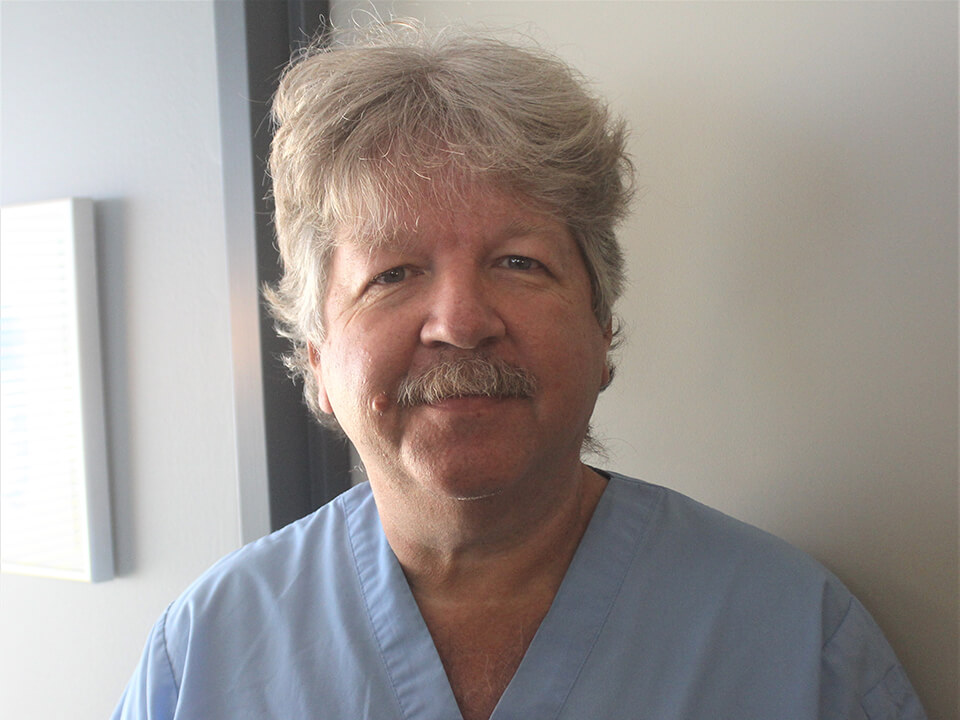
Dr. Robert Kaufmann
Endodontic Specialist
Diagnosis Using Digital Imaging
Along with our “Paperless Office”, we no longer use conventional X ray Film to examine our patients. Digital technology (Intra Oral Digital X Rays) and cbCT (Cone Beam Tomography – a limited area “CT”) scanner are used to obtain realistic, accurate views of the areas of concern. Use of wired Solid State sensors (similar to the technology in a video camera, ) allows us to use far less radiation and software to enhance the images we take. We can now see structures and possible problems that we were unable to visualize only a few years ago.
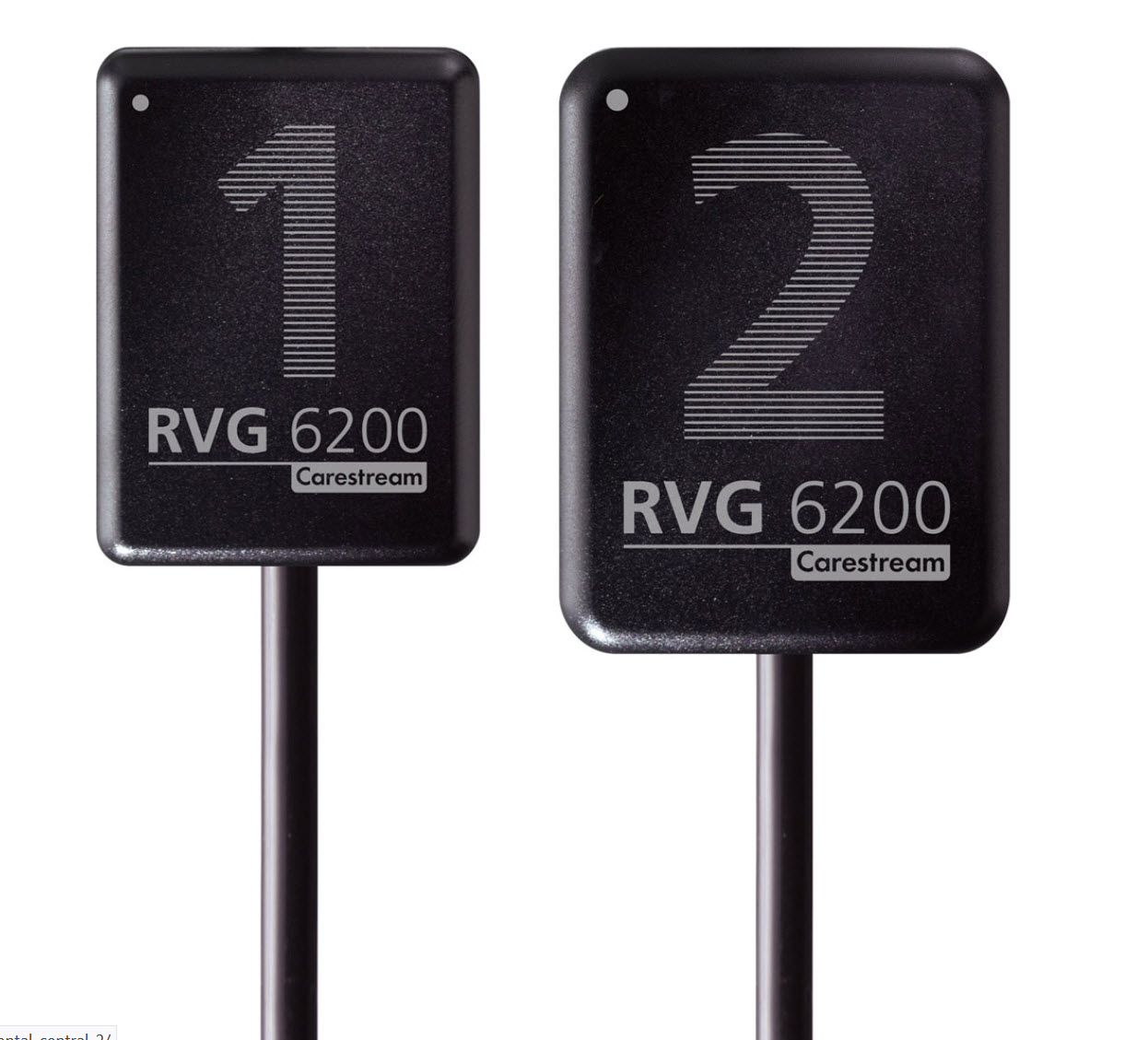
Figure 1
Carestream Digital X ray sensors
Diagnosis Using 3D Computer Tomography
3d cbCT imaging technology has revolutionized Endodontics. Our Carestream/ Kodak 9000 3D is located at Colony Square Imaging on the 5th floor of Colony Square. If a cbCT image is found to be necessary, my staff will escort you down to the 5th floor and assist you with your scan. The scan only takes a few minutes to complete. Scans are most often reviewed by Dr. Kaufmann with you, immediately after they are taken.
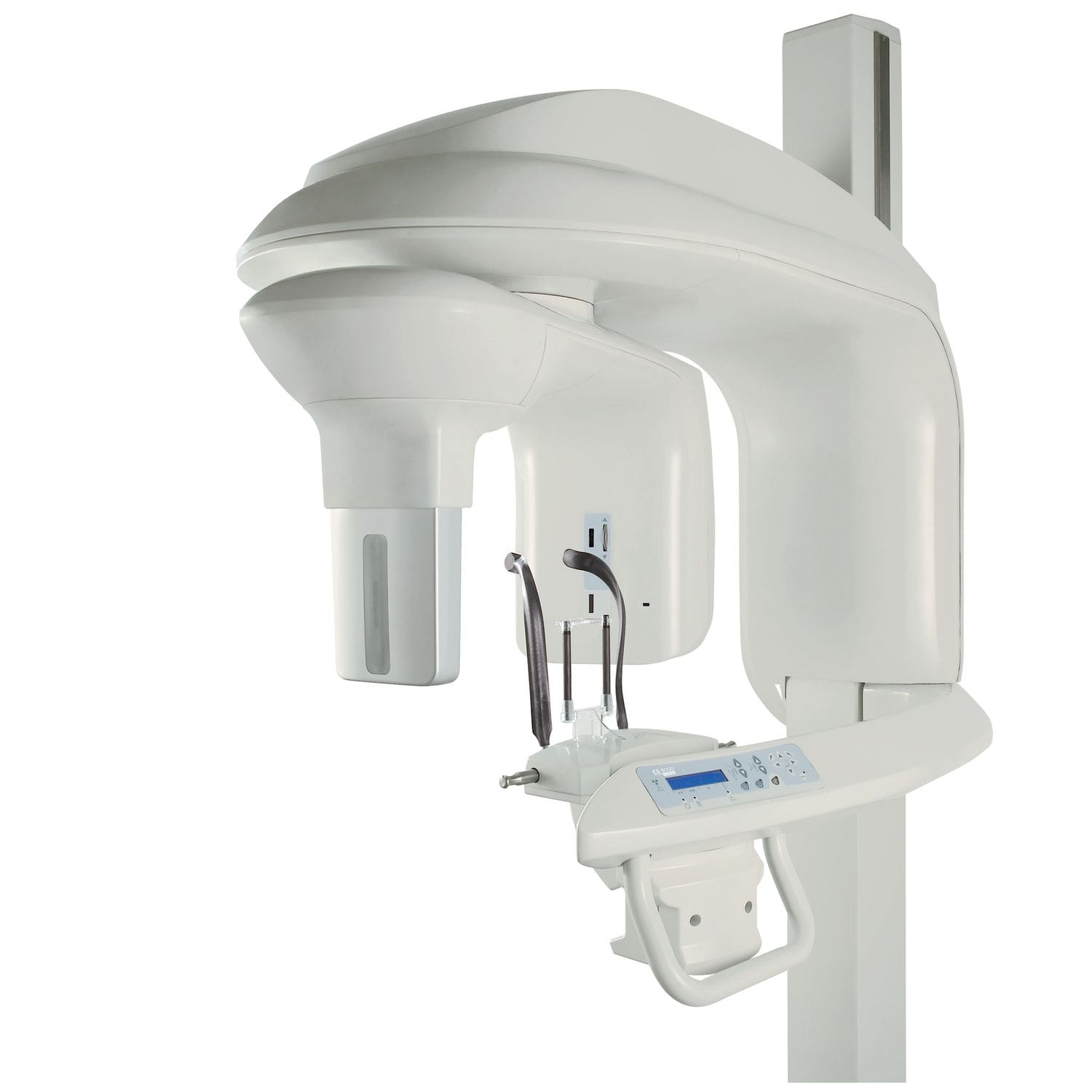
Figure 2
Carestream Kodak 9000 Focused Field cbCT
Pretreatment
Sometimes, the tooth is too broken down to be worked on immediately. In that case, Pretreatment may be necessary. Decay or weak tooth structure is removed and the tooth is rebuilt with a temporary filling (sometimes secured with a special reinforcing band) that allows for completion of the Endodontic treatment. You will then be referred back to your dentist for removal of this temporary reconstruction and replacement with a permanent restoration. It is extremely important that this temporary filling be replaced as soon as possible after treatment. Failure to replace the temporary filling with something permanent can cause contamination of the sealed root canal space and failure of the treatment.
Cleaning and Shaping the Canal System
After administration of a local anesthetic, a protective sheet called a rubber dam is placed on the tooth to isolate it and keep it free of mouth contaminants.
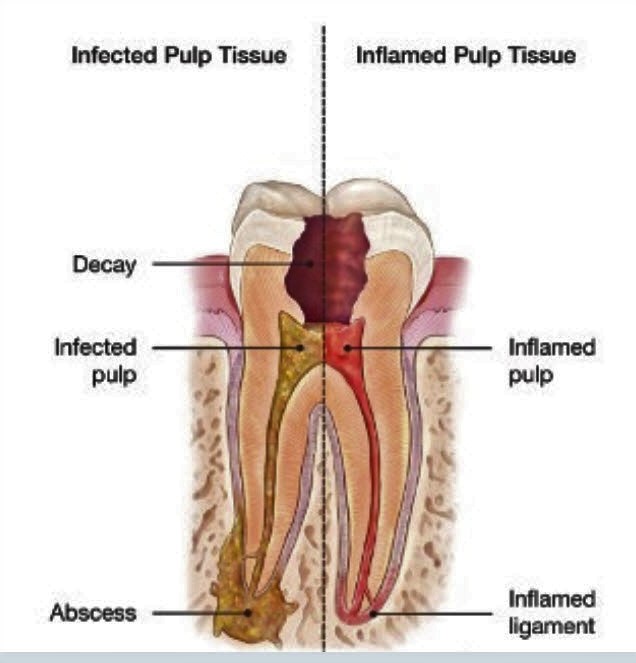
Figure 3
Endodontically Involved Tooth
An opening (called an Access) is made in the crown of the tooth and the canal openings are explored for number and size. Small specialized instruments (called files) are inserted into each of the the canals and an electronic device (apex locator) is used to measure the exact length, known as the “Working Length”. The accuracy of this measurement is critical to the success of treatment and to ensure that the entire length of the canal is treated.
The canal system is cleaned and shaped by sequential application of larger instruments and rinses until desired shape and cleanliness is achieved. With the use of special irrigating solutions, the shaping of the canal system also allows for easier cleaning. The cleaned and shaped canal system is now ready for filling. In infected cases, it may be necessary to seal a medication into the canals for 2 weeks or more, in order to create a bacteria free environment for the root canal filling.
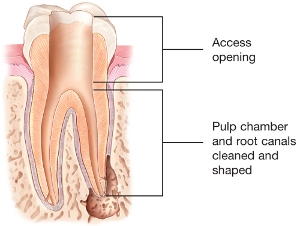
Figure 4
Cleaning and Shaping the Canal System
Obturation
Filling of the Canal System
After the canal system has been cleaned and shaped, the canals are dried. A thin layer of cement is applied to the canals and a material known as Gutta Percha (a medical grade rubber-like material ) is gently warmed and adapted to the canals to seal them from the oral environment.
In less complicated cases, your Dentist may allow Dr. Kaufmann to close the access opening with a permanent filling at your final treatment appointment.
In other cases, an interim temporary filling is placed to close the opening. You MAY then be referred back to your dentist for further reconstruction , if a crown or other types of restoration of the tooth are required.
Figure 5
Root Canals Filled with Gutta Percha and temporized with a Temporary Filling. The tooth needs a final reconstruction by your Dentist. For molar cases and heavily restored teeth we, usually recommend that the tooth be protected with a crown.
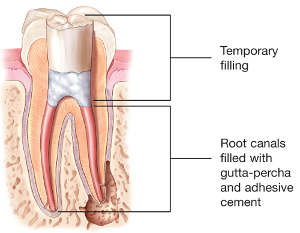
Your Dentist may sometimes ask Dr. Kaufmann to place the foundation filling for the new crown, known as a Core Buildup. In heavily broken down teeth, this may also involve placement of a post in one of the canals . The Post (similar in principle to a concrete anchor) is used to help retain the Core Build Up. This is then prepared by your Dentist to accommodate your new crown.
Figure 6
Root Canals Filled and Post/core placed
The tooth will be prepared by your Dentist to receive a crown.
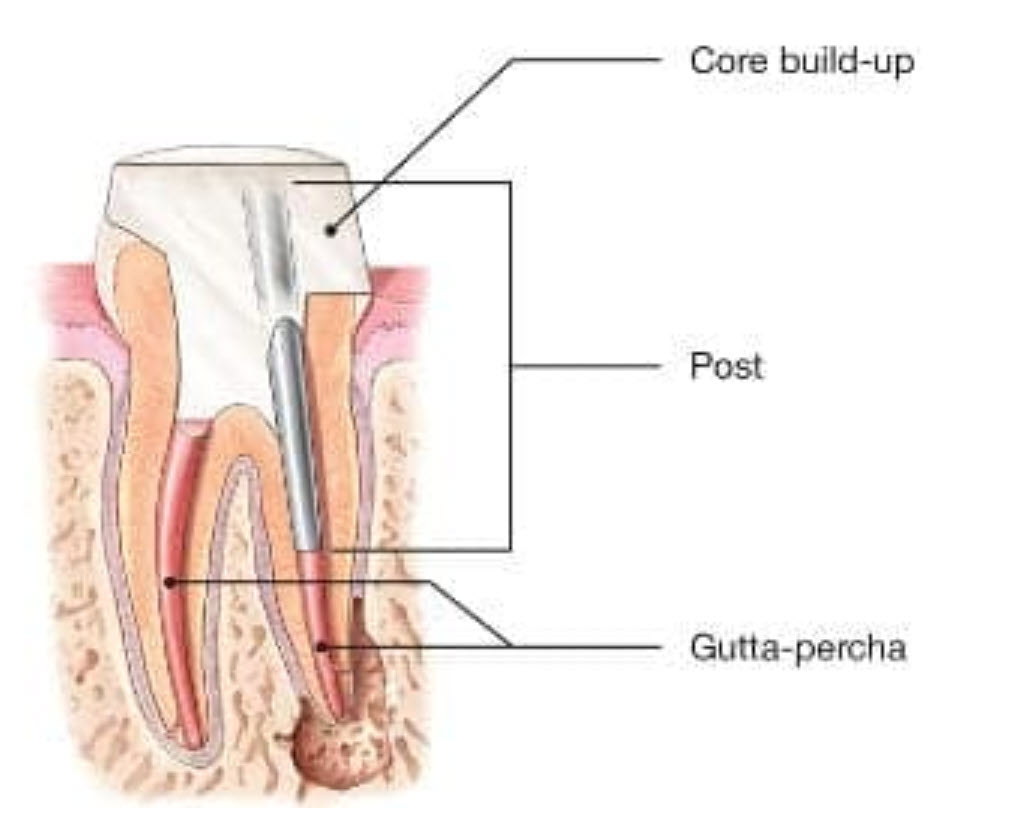
After Your Treatment
Your Endodontic treatment has just been completed. In order for the best possible results to be achieved, we ask that you follow these instructions:
1
1. Avoid chewing in the treated area for the next 48- 72 hours. It is not uncommon for there to be some minimal tenderness to chewing for the first day or two.
2
2. Use Anti-inflammatory medications (Motrin or Advil every 4-6 hrs) as necessary. ( Patients who cannot take Ibuprofen based medications should use Tylenol.
Do not place heat on the area.
3
3. Call Dr. Kaufmann immediately at (204) 783-2971 (24 hrs) if you have swelling or discomfort not managed with these over the counter medications. See Contact information at the bottom of this page for more details.
If further immediate reconstructive treatment is recommended (for example – in the case of a cracked tooth) , Dr. Kaufmann may have his staff call your dentist and arrange for the appointment while you are still in our office. Otherwise, wait for your Dentist to call and schedule you after he has received our report.
Your dentist will recieve any consultation or treatment reports within 24 hours of your appointment (and if he is online, it will be available that day.) Dr. Kaufmann will tell you if a crown or filling is recommended. Reconstruction of the tooth is your dentist’s responsibility and you should discuss the particulars with him/her.

Figure 7
Finished, Crowned Tooth
Delay in reconstruction of the tooth can result in contamination of the root canal filling or outright fracture and loss of the tooth. This can happen in as little as a few weeks. Do not wait. Dr. Kaufmann cannot be responsible in cases where excessive delay in reconstruction has occurred.
Remember that removal of the pulp of the tooth will prevent sensitivity to hot, cold and decay. This does NOT protect the tooth against further cavities, even if it is crowned.
The long term prognosis for the entire case depends on three factors:
1
1. The quality of the post endodontic restoration
Your Dentist’s Responsibility
2
2. Your ability to adequately clean and maintain the restoration
Your Responsibility
3
3. Regular check ups and recalls to assess the area
You, your hygienist and Dr. Kaufmann
Free Follow Up Appointments
Certain Patients are placed on a 6 or 12 month follow-up schedule. These short check up appointments are VERY important. They allow Dr. Kaufmann to assess healing of the area and ensure that the tooth is properly restored. Dr. Kaufmann’s staff will attempt to schedule these appointments at the time your treatment has been completed. There is no charge for these follow-up appointments.
With proper care, Endodontic treatment can last a lifetime. Reconstructive treatment is never permanent. Like any prosthesis, crowns, bridges and fillings may have to be changed occasionally. Speak with your dentist about the best way to reconstruct your tooth.
